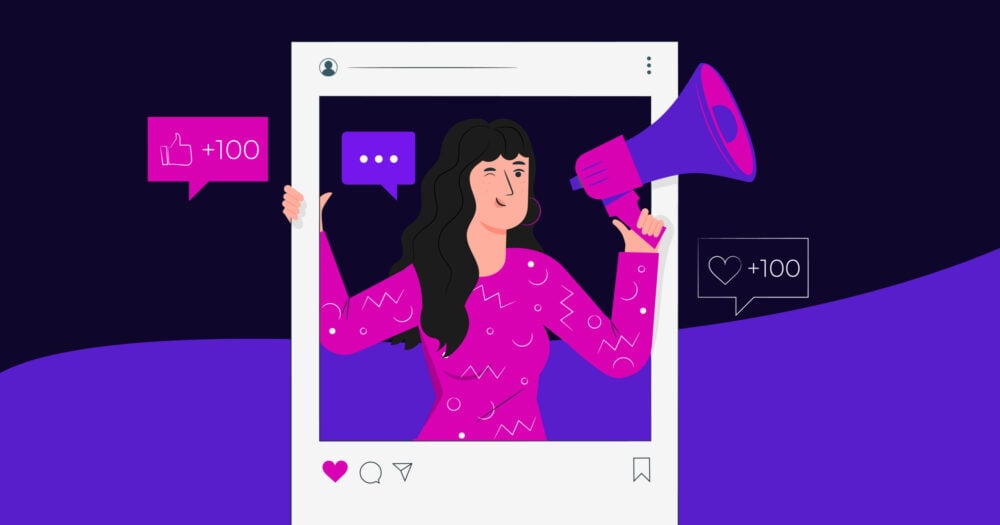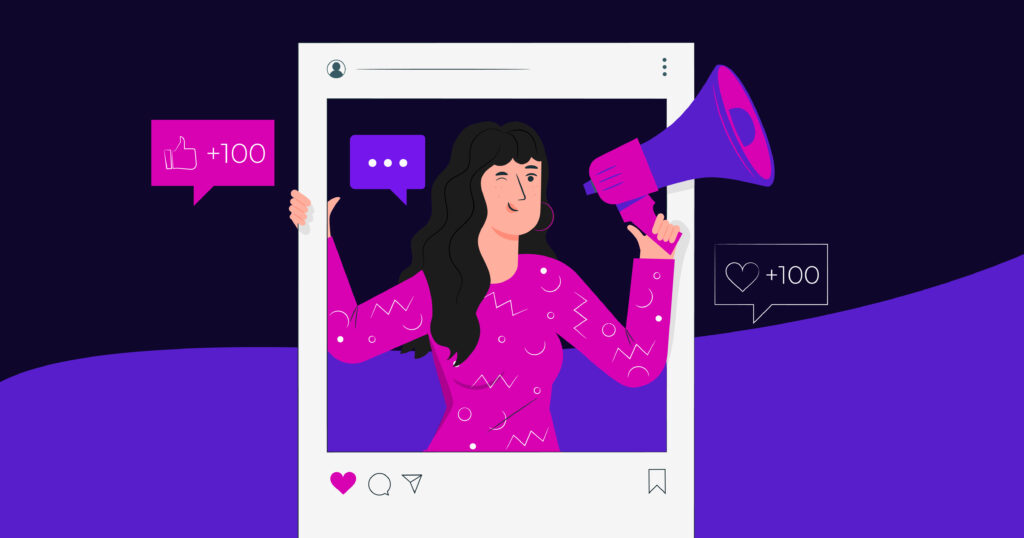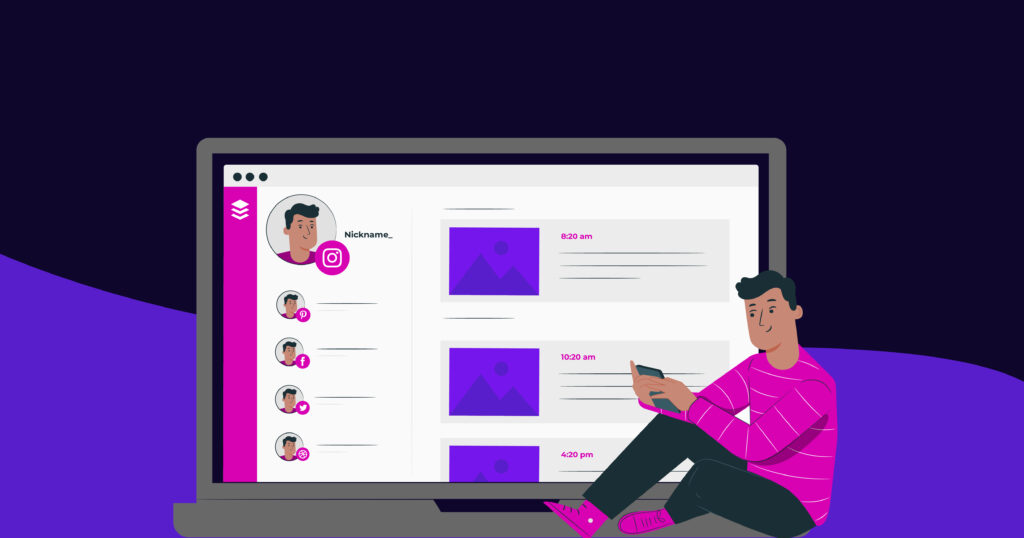
Content marketing is commonly regarded as an arduous and ongoing task that gives marketers headaches. Thinking up what to post, where to post it, how long it should be, and other minute details can become a minefield of questions rather than answers. Because of this, marketers and entrepreneurs are beginning to wonder if AI can solve this problem for them. And if so, how?
Table of Contents

- Segmentation and Targeting
- Understanding Consumer Behavior
- Content Personalization
- Dynamic Content Generation
- Consistent Brand Voice
- Real-time Adaptation
- Enhanced Customer Engagement
- Optimized Marketing Campaigns
How AI Tools for Content Marketing Work
Everyone is saying it – AI has come a long way in a short period of time. But when it comes to the concrete business applications for AI tools, most people have more questions than answers. Browse through modern AI marketing content and you’ll notice even experts have vague predictions with little concrete advice. It’s safe to say that in order to really use AI tools for content marketing, you’ll have to get ahead of the curve.
Using AI effectively for your content strategy is a multifaceted approach. The good news is, no matter what level of complexity you start at, there’s nowhere to go but up. According to Hubspot, 33% of marketers already use AI to generate content ideas and 25% use it to write content, but this is just the tip of the iceberg.
Segmentation and Targeting
AI can categorize audiences into segments based on various criteria, such as demographics, location, interests, and online behavior. This segmentation lets you target specific groups with content that resonates with their unique preferences.
Perhaps the most famous example of this process done well is Amazon. By leveraging AI for customer segmentation and targeting, Amazon creates a highly personalized experience. Customers feel that the platform understands their preferences, which increases the odds that they’ll find and buy things they want.
Reputable AI tools for Segmentation and Targeting: IBM Watson Customer Experience Analytics, Google Analytics
Understanding Consumer Behavior

AI algorithms can analyze historical data to understand consumer behavior, including preferences, purchasing patterns, and engagement with past content.
Chatbots are a common way companies are gleaning key insights about their audience. Brands are also investing in providers like Cognitiv.ai who build custom algorithms to help them predict consumer behavior with data.
Potential Challenges
The glaring challenge of using AI to better grasp consumer behavior is potential inaccuracy. While yes, thousands of consumers might prefer one type of product over another, this doesn’t necessarily have anything to do with your audience. AI gleans insight from vast amounts of consumer data, but this often gives you information about the average consumer, or the consumers who happened to be polled in these particular studies. Businesses can’t know for sure that the data being gathered is truly reflective of their target audience and its unique preferences.
Popular AI tools for Understanding Consumer Behavior: Google Analytics, Brandwatch Consumer Research
Content Personalization
Leveraging machine learning, AI tools like ChatGPT can create personalized messaging for different audience segments. This includes customized product recommendations, promotional offers, and communication that aligns with individual preferences.
ChatGPT can be used to translate your content into different languages. So if your target demographic spans across different countries or cultures, you can reach them all in their native language. Here’s an example of this paragraph in Swahili, generated in just seconds:
ChatGPT inaweza kuchambua kiasi kikubwa cha data, ikiwa ni pamoja na mwingiliano wa wateja, historia ya ununuzi, na tabia mtandaoni. Hii inaruhusu biashara kutambua mifumo, mapendeleo, na mwenendo katika tabia za watumiaji.
Reputable AI tools for Content Personalization: Optimizely, OneSpot
Dynamic Content Generation

AI can help you generate dynamic content across various channels, ensuring that each interaction with your brand is unique. This could be personalized emails, website content, social media posts, or advertisements.
One thing people may not realize about AI content generation tools is the depth of analysis and learning that goes into the algorithms. These tools don’t just generate content based on simple rules or templates – They leverage machine learning to analyze vast amounts of data like language patterns, consumer behavior, and metrics from past campaigns. This deep dive allows AI to continually refine and optimize your content generation process, offering increasingly better marketing results.
Potential Challenges
With that said, there are some concerns with AI content generation that you may want to consider. While Google has explicitly stated that it does not penalize AI content in rankings, someone who isn’t skilled at using AI content generators can end up creating generic or even inaccurate content. This is why marketers are better off educating themselves in AI marketing tools so they don’t hurt their content quality.
Reputable AI tools for Dynamic Content Generation: Persado, Phrasee
Consistent Brand Voice
AI tools can be trained to maintain a consistent brand voice, ensuring coherence across all communication channels. This consistency contributes to a strong and recognizable brand identity.
Even free tools like ChatGPT can be trained to learn about your brand through your specific data. In an upcoming blog, we’ll share exactly how to do this for best results. Marketers simply feed ChatGPT all vital information such as brand values, speaking style, target audience, and customer pain points. Once you’ve given these details, you can ask the tool specific questions like, “What are 5 ways we can communicate our unique value proposition?”
Reputable AI tools for Consistent Brand Voice: Acrolinx
Real-Time Adaptation
AI algorithms can adapt content in real-time based on user interactions. For example, if a user engages with specific types of content, AI can adjust messaging to align with those preferences. When someone visits your website, AI can generate personalized product recommendations in real-time.
Potential Challenges
Relying solely on AI for real-time adaptation could eventually backfire without enough human oversight. These tools don’t have the capacity to consider context or unexpected opportunities that a human would likely catch. If not properly monitored, real-time adaptation tools might solely prioritize short-term gains at the expense of long-term goals, brand integrity, or customer relationships. So it’s critical for brands to strike a balance between AI automation and human expertise to keep marketing campaigns in check.
Reputable AI tools for Real-time Adaptation: Albert (by Albert Technologies), Selligent Marketing Cloud
Enhanced Customer Engagement

Personalized content is more likely to capture the audience’s attention and foster engagement. Whether it’s through personalized product recommendations or interactive content, AI helps create experiences that resonate with individual consumers.
Engagement tools are growing in popularity as brands learn that they can use natural language processing (NLP) to employ conversational AI. These AI content marketing tools can answer FAQs and provide basic information without human intervention.
Reputable AI tools for Enhanced Customer Engagement: Drift, LivePerson
Optimized Marketing Campaigns
AI-driven insights can be used to optimize marketing campaigns by identifying which types of personalized content are most effective. This data-driven approach ensures that branding efforts are focused on what yields the best results.
Reputable AI tools for Optimized Marketing Campaigns: AdRoll, HubSpot
Let AI Power Your Content Strategy
By integrating AI in your content creation process, you’ll can not only streamline content production but also establish a better connection with your audience. Personalized content ensures your marketing is actually meeting your audience where they’re at – and that’s the best way to establish a lifelong, happy customer base.
About the author

Brianna Johnson
Brianna is a professional writer of 10+ years who specializes in branding, marketing, and technology content.









